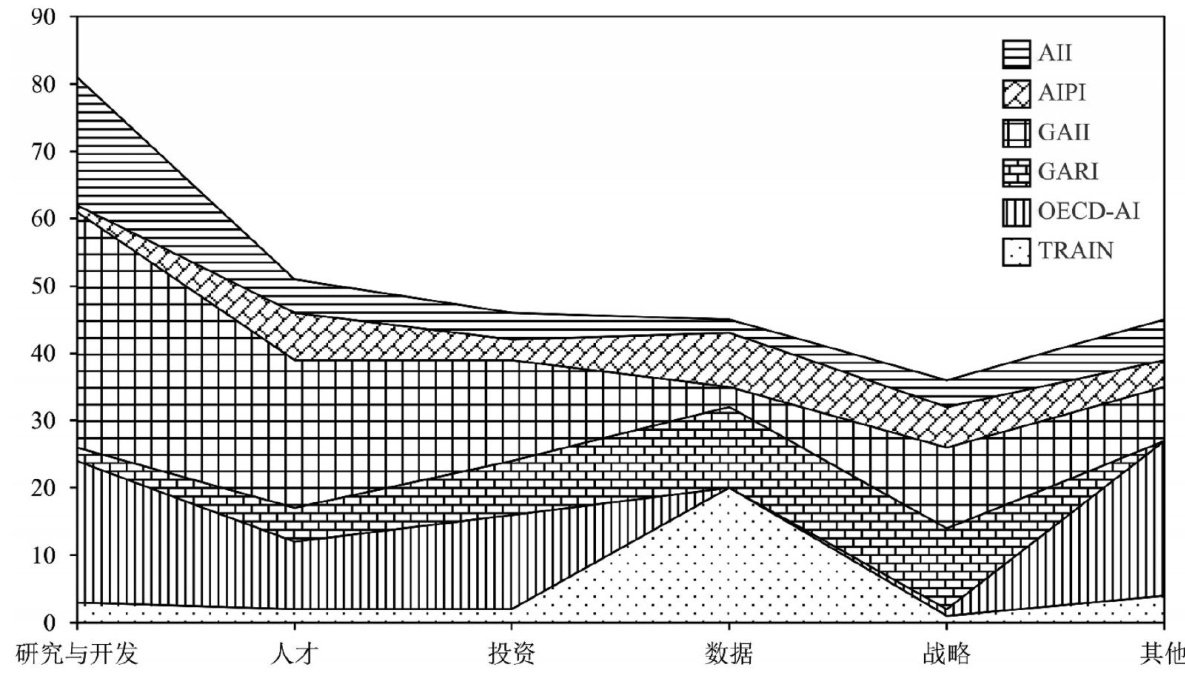基于排名结果的全球人工智能评价指标体系研究


打开文本图片集
中图分类号:TP18 文献标识码:A DOI:10.11968/tsyqb.1003-6938.2025043
AbstractAgainstthebackdropof intensifyingglobalartificial intelligence (AI)competition,frequentfluctuations in national ankings across evaluation indices not onlyreflect shifts in nationalcapabilities but also reveal how index design logic influences and shapes assessment outcomes.To interrogate this phenomenon,this paper first selected nine mainstreamAI evaluation indicesas research samples basedon five principles:representativeness,professionalism,relevance, transparency,and timelinessUsing the TF-IDFalgorithm for taxonomiccategorizationoforiginal indicators,five thematicdimensionswereidentified:ataIrastructure,TlentPol,&Dapacity,Ivestment&eplomentdtrat egy&Governance.Employing this framework,weconducted cross-sectional comparisons ofscoresacrossthese dimensions forl5leading nationsand longitudinal trackingof theirrank variationsacross indices and time periods.Keyfindings indicate that: Ranking volatility stems primarily from adjustments in indicator weighting schemas and scoring granularity,withindicesembedding distincttechnological prioritiesandvalueorientations;TheStrategy&Governance dimensionexhibits high reactivity topolicysignals,whileotherdimensions demonstrate greater temporal stability.This research proposes a standardized five-dimensional evaluationarchitecture incorporating dynamic weightcalibration and anannual rolling revision mechanism.This approach achieves dynamic equilibrium between international comparability andcontextualadaptation,providing methodologicalscaffoldingforconstructingversatileyetresponsiveAIassessment frameworks.
Keywords artificial intelligence;index evaluation; evaluation outcomes; evaluation indicators;scientometrics
人工智能(Artificial Intelligence,AI)作为重塑经济、社会和军事版图的战略性技术,已成为衡量国家间相对实力与国际权力分配的重要变量[]。(剩余15588字)